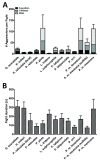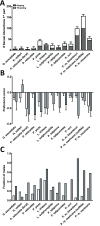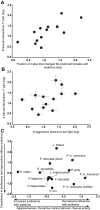Casanovas are liars: behavioral syndromes, sperm competition risk, and the evolution of deceptive male mating behavior in live-bearing fishes
- PMID: 24627773
- PMCID: PMC3917653
- DOI: 10.12688/f1000research.2-75.v3
Casanovas are liars: behavioral syndromes, sperm competition risk, and the evolution of deceptive male mating behavior in live-bearing fishes
Abstract
Male reproductive biology can by characterized through competition over mates as well as mate choice. Multiple mating and male mate choice copying, especially in internally fertilizing species, set the stage for increased sperm competition, i.e., sperm of two or more males can compete for fertilization of the female's ova. In the internally fertilizing fish Poecilia mexicana, males respond to the presence of rivals with reduced expression of mating preferences (audience effect), thereby lowering the risk of by-standing rivals copying their mate choice. Also, males interact initially more with a non-preferred female when observed by a rival, which has been interpreted in previous studies as a strategy to mislead rivals, again reducing sperm competition risk (SCR). Nevertheless, species might differ consistently in their expression of aggressive and reproductive behaviors, possibly due to varying levels of SCR. In the current study, we present a unique data set comprising ten poeciliid species (in two cases including multiple populations) and ask whether species can be characterized through consistent differences in the expression of aggression, sexual activity and changes in mate choice under increased SCR. We found consistent species-specific differences in aggressive behavior, sexual activity as well as in the level of misleading behavior, while decreased preference expression under increased SCR was a general feature of all but one species examined. Furthermore, mean sexual activity correlated positively with the occurrence of potentially misleading behavior. An alternative explanation for audience effects would be that males attempt to avoid aggressive encounters, which would predict stronger audience effects in more aggressive species. We demonstrate a positive correlation between mean aggressiveness and sexual activity (suggesting a hormonal link as a mechanistic explanation), but did not detect a correlation between aggressiveness and audience effects. Suites of correlated behavioral tendencies are termed behavioral syndromes, and our present study provides correlational evidence for the evolutionary significance of SCR in shaping a behavioral syndrome at the species level across poeciliid taxa.
Conflict of interest statement
Figures



References
-
- Andersson M: Sexual selection. (Princeton: Princeton University Press).1994;624 Reference Source
-
- Sargent RC, Gross MR, Van Den Berghe EP: Male mate choice in fishes. Anim Behav. 1986;34(2):545–550 10.1016/S0003-3472(86)80123-3 - DOI
LinkOut - more resources
Full Text Sources
Other Literature Sources

